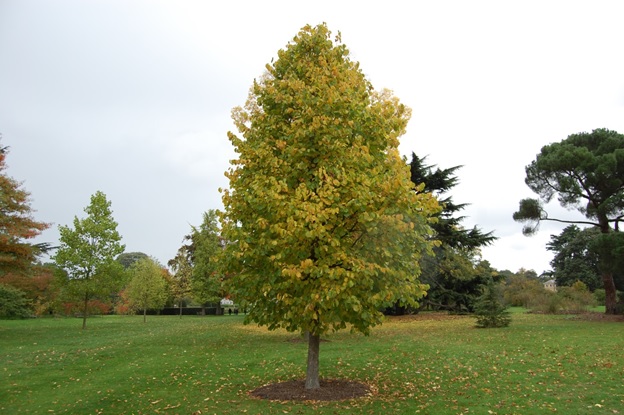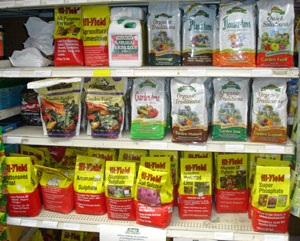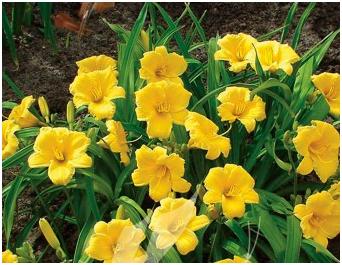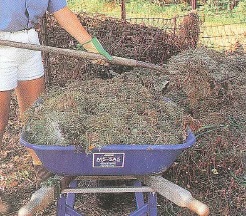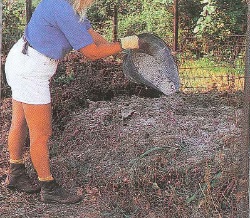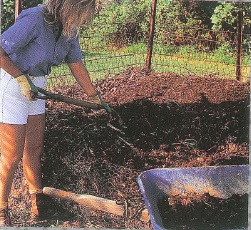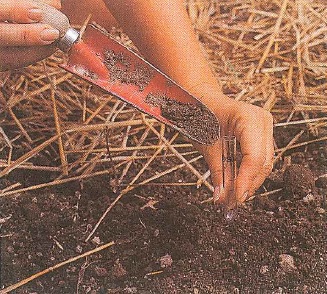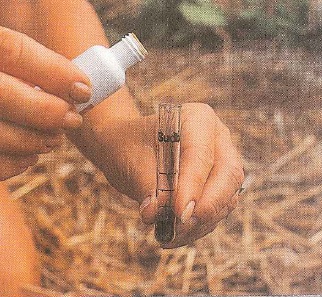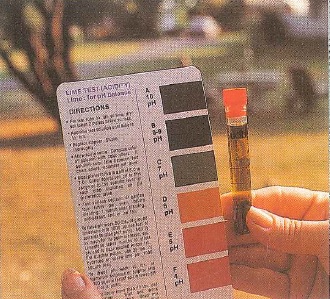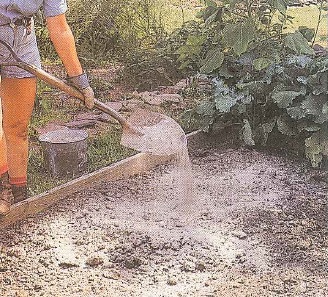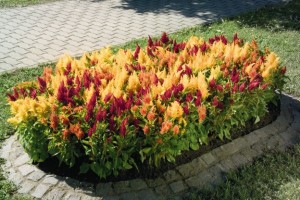
Celosia plumose in a flowerbed
Celosias
If you are looking for lasting splashes of colour in your garden and a supply of fresh cut flowers to your table, annual flowering plants are your best friends. Of these, celosias, amaranths, gomphrenas and sunflowers are some of the hardiest on the market, that after the initial investment of care when planted, provide great returns throughout the season:
Very few flowers are as showy as celosia. Whether you plant the plumed type, which produces striking upright spires, or the crested type, which has a fascinating twisted form, you’ll enjoy the unusual red, pink, purple, gold or bi-colored flowers all summer and fall long as they typically bloom for up to 12 weeks in all the colors of a glowing sunset. When many celosia flower blooms are next to each other, they collectively resemble fire, thus their name Celosia, which means burning in Greek.
This is definitely a sun loving annual that grows between 1-8 feet tall and spread 6-18 inches wide. It requires watering until well established and can tolerate drought conditions later on.
You will love using celosia in bouquets, but you can also dry them easily. To dry these flowers, hang them upside down in a cool, dark, and dry place, for about two months. Celosia also makes a very showy, unusual display in borders and as edging. While the brilliant reds are by far the most popular color, Celosia, or Cockscomb, also come in yellow, orange, crimson, rose, and purple flowers.
Celosia is grown from very fine seeds. Celosia is usually grown as an annual; although this plant drops its seeds and given favourable conditions, it can seed on its own and take over an area larger than intended.
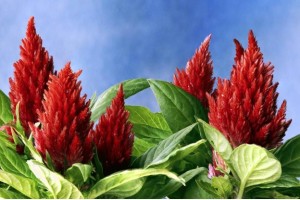
Amaranths produce tassels of dark red flowers
Amaranths
Amaranths are showy and exotic accent plants, ideal for beds and borders. They are also great in bouquets and in dried flower arrangements. At maturity, amaranth flowers cascade to the ground from tall, erect branching stems in breathtaking tassels of the darkest red or green.
The plant is large and bushy, growing about 3 to 4 feet high. Although amaranth is primarily cultivated as an annual ornamental plant, many of its species are grown as edible leaf vegetables or cereals.
Considered a native plant of Peru, this hardy plant is now grown around the world, including Ontario. Amaranth prefers partly shady to full sunlight conditions and a high elevation, but it can grow at almost any elevation in temperate climates. The soil type is not overly important, though it should have a PH between 6 and 7. For the most vibrant flowers it is best that the soil is not too rich, as this soil type encourages growth. Amarath can also survive in low-water conditions once the plants have been established.
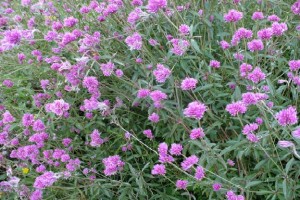
Gomprena Fireworks
Gomprena
If you’re looking for a tough plant that will keep on blooming despite the heat of the summer, gomphrena is a perfect choice for that. This native to Panama and Guatemala plant, also known as globe flower or globe amaranth, produces dozens of showy, globe-shaped lavender, purple, pink, red, magenta, blue, orange and white flowers that blooms from early summer to frost. The additional colours are brought to your garden by a variety of butterflies this sun-loving plant is sure to attract.
Gomphrena can reach about 25cm to 45cm in height. The flowers look a lot like clover about 1 inch in diameter, and they seem to last forever and have a straw-like texture. As such, they are highly valued for dried flower or cut flower arrangements.
Once established, gomphrena is actually maintenance-free. But the plant needs to establish itself first, so it’s best to give your gomphrena plant some extra pampering initially. Even though gomphrena can tolerate hot and dry weather, you still need to provide sufficient water to saturate the root zone. You have to be careful when watering gomphrena during the roots establishment – the plant does not like wet soil, so even in this initial stage do not water the plant again until the soil dries after the previous watering. Also, be sure to plant gomphrena in full sun. The plant will tolerate partial shade, but in full sun will produces better flowers.
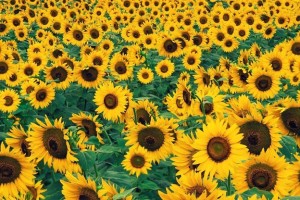
- Van Gogh in the garden
Sunflowers
American natives, sunflowers, have been grown in the Americas for centuries. They have been cultivated both, for decorative beauty and as a valuable food source when harvested for seed.
These annual plants have big, daisy-like flower faces of bright yellow (occasionally red) petals, and brown centers that ripen into heavy heads filled with seeds. Tall and sturdy, the plants have creeping or tuberous roots and large, bristly leaves. Some sunflowers grow to over 16 feet in height, however, most of the newly developed varieties on the market today are small plants suitable for small spaces and containers that are used mainly as cut flowers.
Sunflowers are remarkably tough and easy to grow as long as the soil is not wet. Most are heat- and drought-tolerant. They make excellent cut flowers and are sure to attract to bees and birds.

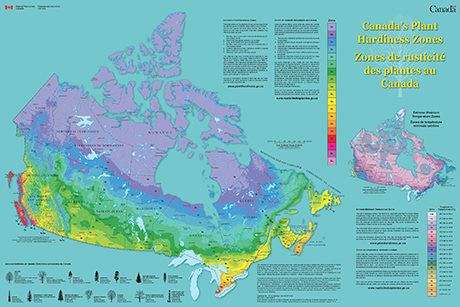 If you are planning to buy a shrub, perennial or a tree, you need to make sure that this new plant will tolerate all-year-round temperatures in your area. To ensure that the new plant will survive and grow year after year you need to make sure that the hardiness zone in your area matches the hardness zone of the plant.
If you are planning to buy a shrub, perennial or a tree, you need to make sure that this new plant will tolerate all-year-round temperatures in your area. To ensure that the new plant will survive and grow year after year you need to make sure that the hardiness zone in your area matches the hardness zone of the plant.






